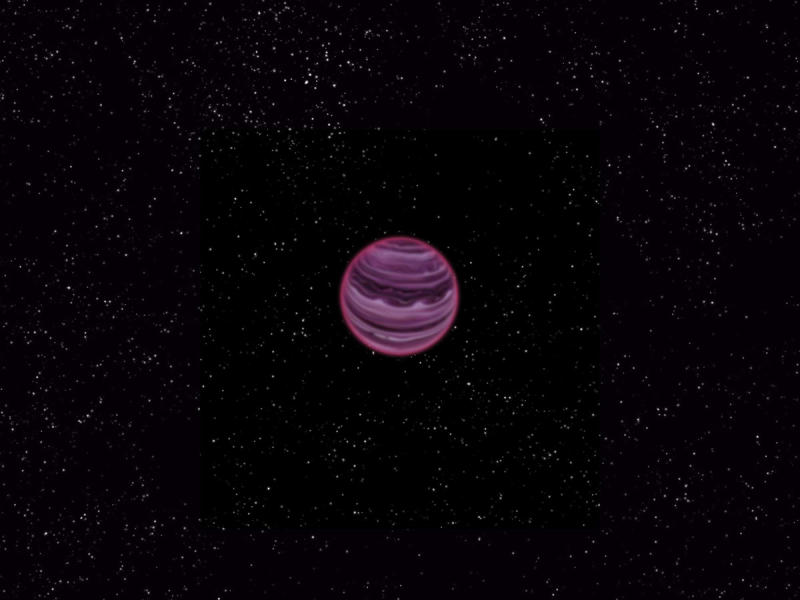October 12, 2013
Astronomers have discovered another exo-planet. However, PSO J318.5-22 is a bit different from most....this planet is not orbiting any star. It is an orphan gas giant that was either cast into space or somehow formed alone.

The very VERY cold body is 80 light years away.
Posted by: The Brickmuppet at
12:04 PM
| Comments (8)
| Add Comment
Post contains 48 words, total size 1 kb.
Posted by: Mauser at Sat Oct 12 17:19:38 2013 (TJ7ih)
Very much. Sounds like a brown dwarf, a category of object which amounts to "failed star". They form the same way stars do but don't have enough mass to ignite. They radiate infrared, but it's all energy from the formation process.
Posted by: Steven Den Beste at Sat Oct 12 20:18:10 2013 (+rSRq)
A recent discovery is that there seems to be rather a lot of rogue planets out there, anything from a trillion to perhaps many quadrillion wandering about the Milky Way.
And it may not be cold at all. Just guessing, but at 6x the mass of Jupiter and only 12 million years old, it's probably still several hundred degrees in your temperature scale of choice.
Posted by: Pixy Misa at Sat Oct 12 21:01:28 2013 (PiXy!)
Posted by: Mauser at Sun Oct 13 02:31:17 2013 (TJ7ih)
Posted by: Pixy Misa at Sun Oct 13 06:38:23 2013 (PiXy!)
Of course, it could just be that somebody's disintegration ray did a very thorough job on the star, or that the planet was the only thing flung out of a black hole that ate its original system, or....
Posted by: Suburbanbanshee at Sun Oct 13 12:45:46 2013 (cvXSV)
Posted by: Mitch H. at Mon Oct 14 13:13:01 2013 (jwKxK)
RE: Voagyer leaving the solsar system was actually a discovey. It turns out that the heliopause is on this side of the Oort cloud. The characteristics of interstellar space were thought to be quite different from planetary space. Voyager discovered that was true thus confirming the associated theory and locating the heliopause...at least in the direction Votager is flying.
I guess the Oort cloud orbits the solar system. I suppose given it's origin and the fact that it's influenced the sun's gravity that its considered part of the SS but it is in interstellar space.
I'm guessing that there is much discussion of this in the NASA nomenclature situation room.
Posted by: The Brickmuppet at Mon Oct 14 14:09:19 2013 (DnAJl)
69 queries taking 0.5098 seconds, 374 records returned.
Powered by Minx 1.1.6c-pink.









